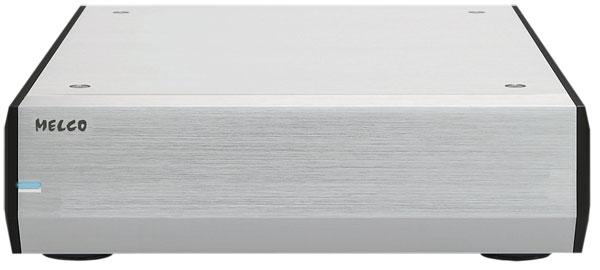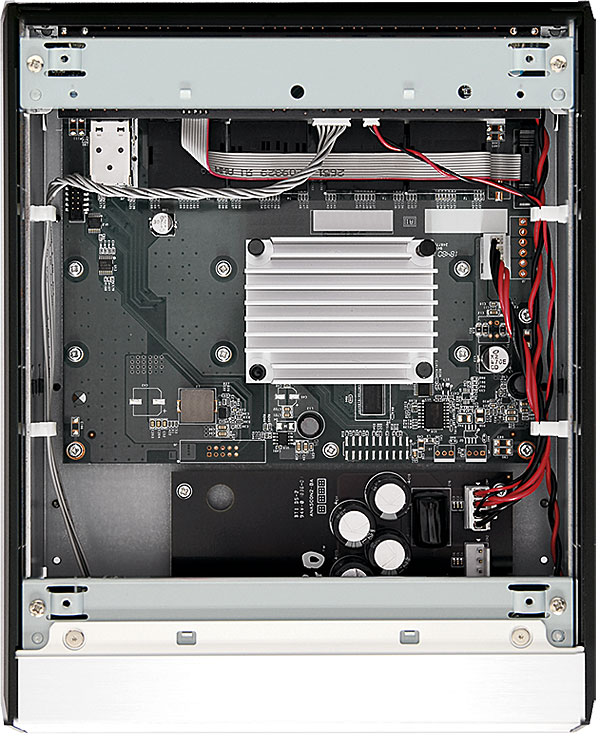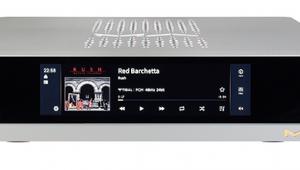Melco S100 Network Switch

 One of a growing choice of 'audiophile' network switches, this one comes from Digital Music Library specialist Melco. Can this work magic in any networked system?
One of a growing choice of 'audiophile' network switches, this one comes from Digital Music Library specialist Melco. Can this work magic in any networked system?
When Japanese-based Melco launched its first 'Digital Music Library' [HFN Feb '15], it more or less started a trend for audiophile music storage devices, and these days there's no shortage of rivals out there, all claiming to deliver the best possible sound for your network audio. However, its first 'Audiophile Dataswitch' enters a somewhat different arena, where it's not exactly a pioneer.
Recently there's been an explosion in the availability of switches designed to go between your Internet connection, your music storage and your network audio player, with enthusiasts claiming 'magic properties' for particular existing IT-type network switches, and a variety of companies offering their own 'audiophile-tuned' offerings.
Cut Above
The S100, which made its debut at last year's UK Hi-Fi Show Live held at Ascot, occupies its own position in this new market. It's comfortably the most expensive unit of its kind, at £2000, easily lifting itself above rivals such as The Chord Company's English Electric 8 Switch (£450) and the Russ Andrews Network Switch at just under £960, not to mention a raft of other switches claiming audiophile credentials and available online at prices from US $350 upwards. Clearly something is going on to have consumers spending many times the price of a perfectly functional 'ordinary' network switch, so what is Melco offering here?
The company already puts great store in optimised network connections, to the extent of providing a standard connection for all the usual network stuff on its hardware, plus a dedicated, isolated socket to serve the network player directly (assuming you're not using the Melco server straight into a DAC via its similarly isolated USB output). So, the idea of the S100 is not just to complement the company's range of digital music libraries, but also upgrade any network set-up using Ethernet connectivity for audio.
The S100 is not a modified version of an existing IT-grade design, but a new solution that draws on the expertise of its parent company's Buffalo division (as it does for the drives in its storage devices). This bespoke box includes its own processor, a 1.5MB packet buffer, plus audio-grade capacitors in its PSU, which is fed from an offboard power supply 'brick', used for isolation and to allow for future upgrades.

Sound-Critical
It's all mounted in a vibration-isolating steel chassis as used for the company's N10 series music libraries [HFN Jun '19], with shielding provided by external aluminium casework. The company says that 'internal packet-traffic settings have been optimised for use with IT NAS drives, IT routers (for streaming services), Roon Core processor devices, Roon Bridges, and Melco's N1, N10 and N100 digital music libraries'.
In practice, the S100 provides three means of connectivity: there are four 100Mb Ethernet ports, four 1Gb ports, and two SFP ports to connect fibre optic cables via suitable adapter modules, which will cost you around £20 apiece. The 100Mb ports are designed for sound-critical devices such as network players and NAS units (or a Melco library) and also your Internet router if you're using streaming services. The 1Gb ports are designed for high-traffic connections to a Roon Core, or for control if you're not streaming from online services, while the optical connections offer an isolated link to compatible players, including Lumin's models.
![]() Pounding Bargain
Pounding Bargain
Before installing Melco's S100, I first rolled back my fibre optic links and modified Cisco switches to a simple budget Netgear switch between my QNAP servers and Naim ND555 [HFN Apr '19], and spent some time listening to the rather parched, bland and not very interesting sound, despite all the remedial processing going on inside the Naim network DAC.
Pulling out the Netgear and inserting the Melco S100 put things back on the right path, the music gaining body, detail and insight, and not in a subtle way. Even with a period recording such as David Bowie's Newleyesque 'Love You Till Tuesday', from his self-titled 1967 album [Deram/Universal UICY-25536], the complexities of the arrangements became much clearer, the thunderstorm of 'Please Mr Gravedigger' more ominous, and Bowie's intonation of the developing story all the more chilling. What sounds like a trite piece of music theatre now came unsettlingly alive.

How obvious you find the gains with the S100 in harness will depend on the quality – and in particular the resolution – of the player employed downstream. In my system it was clear cut, at least when compared with a basic switch configuration.With the excellent Linn compilation A Bach Offering [Linn Records OKD004; 192kHz/24-bit] the S100 carried the depth, texture and expression, and well-captured acoustics of this familiar performance with aplomb. Similarly, even with the pounding 'Bargain' from The Who's Next [Qobuz stream; 96kHz/24-bit], this 'audiophile dataswitch' brought greater insight into the component parts of the mix, from the rumbling bass and frenetic drumming to the strike and sustain of the lead guitar.
And so it goes on, with the Melco S100 simply revealing more of everything you play. I'll stick to my belief that one can obtain similar gains for less with some DIY network fettling, but if you want a simple plug 'n' play improvement for a high-end network music system, the S100 takes some beating.
Hi-Fi News Verdict
As ever, it's hard to give an absolute verdict on such a device where gains will depend as much on the rest of your network as on the ability of your network player to reveal what it does. But if you've invested heavily in network playback, and want a simple, easy to install upgrade for your system, the S100 has much to recommend it. It just works, and can bring major sonic gains to any Ethernet-based set-up.























































